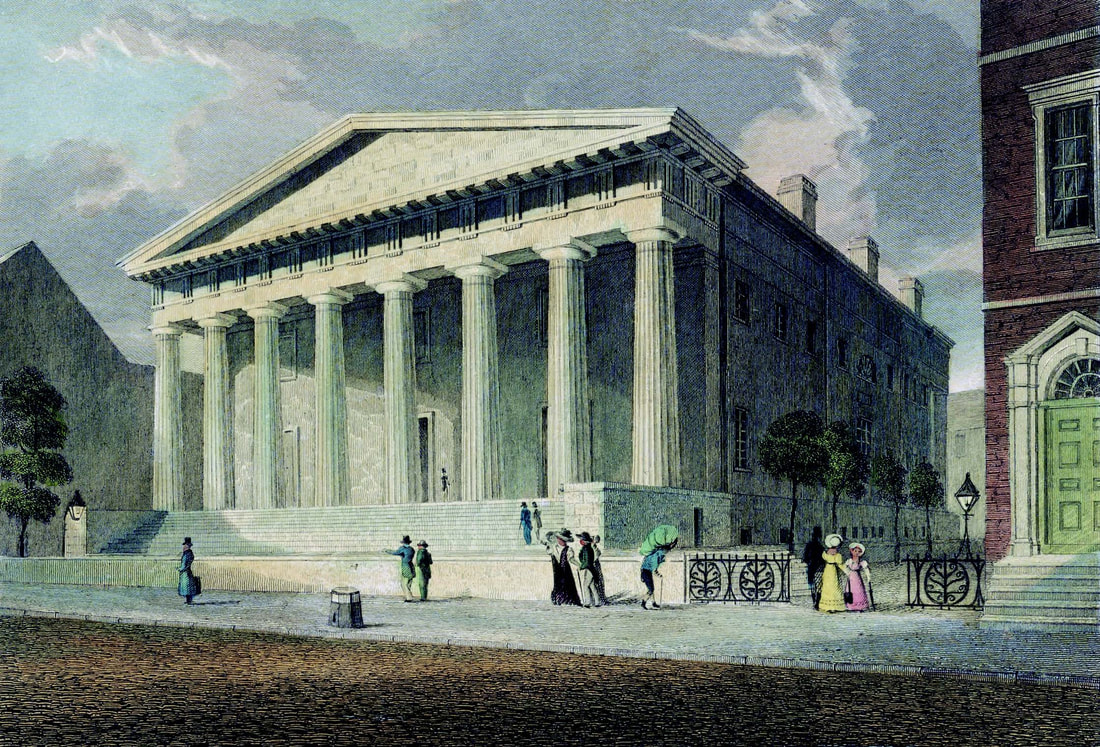
The tight money policies of the Second Bank of the United States, headquartered in Philadelphia (above), were blamed for the length and depth of the recession following the Panic of 1819, particularly in the South and West, where borrowed money was needed to buy land on the frontier. The loss of credit caused many Alabama landowners to default on their loans. (Library of Congress)
In many ways the year Alabama became a state stands as among the least auspicious of its tumultuous territorial experience. Shortly after the turn of the New Year in 1819, a land heretofore showcasing steady economic growth, generous and easy credit, wide-ranging speculation, and general optimism among a swelling population suddenly entered a severe economic downturn that threatened to reverse its previous progress. Known to historians as the Panic of 1819, this first major depression in US history struck Alabama particularly hard and carried far-ranging repercussions that resonated well into its first decade of statehood.
 RSS Feed
RSS Feed